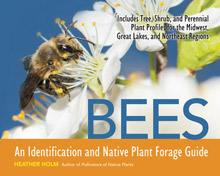Take a river, add a canoe, binoculars, notepad and pencil and you have a recipe for time well-spent. In this case, the time was during the 1940s, the river was in Ottawa and the watcher was the British High Commissioner, Malcolm MacDonald.
MacDonald’s keen observations of avian lives and loves, drama and tragedy - just a few paddle strokes from his office - survive the test of time.
The Birds of Brewery Creek, published in 1947, is organized by the month and it’s a pleasure to find how the May chapter from 80 years ago mirrors the parade of birds observed here in south-central Ontario in May, 2024.
May is the start of nesting – and the familial experiences of many birds are described in detail. (The book can be read online on the website archive.org – by being borrowed for an hour at a time. I never had any problem renewing for another hour.)
“One of the most fanciful designers and builders of nests in Canada is the Baltimore Oriole. No bird is more skilful. Its creation is so fine that it might be classified as a work of art rather than one of mere craftmanship,” MacDonald writes. He found several such nests, but was disappointed in his efforts to view a bird in the act of building.
Read more



















